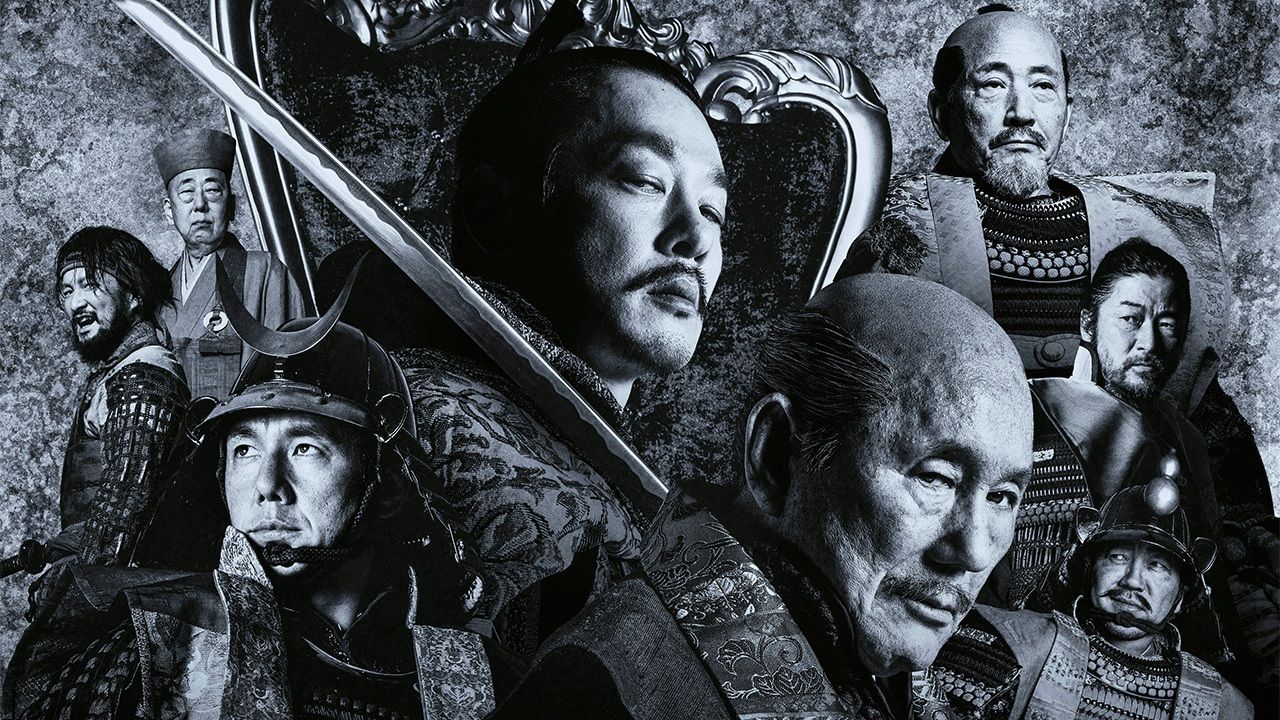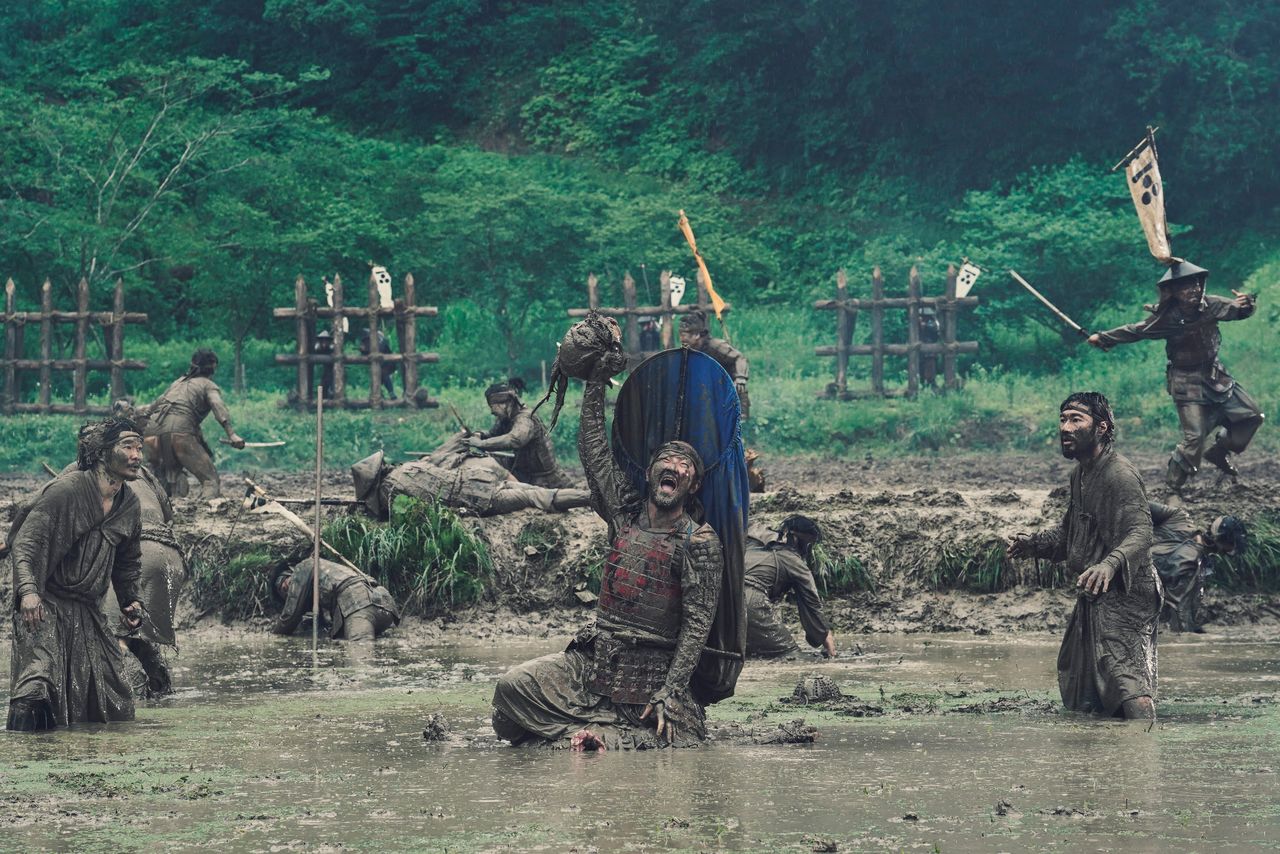
“Kubi”: A Historical Drama with Kitano Takeshi Flair
Cinema- English
- 日本語
- 简体字
- 繁體字
- Français
- Español
- العربية
- Русский
Kitano Returns to Samurai Drama
Kubi is Kitano’s second historical drama, following 2003’s Zatōichi. It is set in the Warring States period (1467–1568), when powerful daimyō lords were in constant conflict. The film focuses on the later part of that time, leading up to the assassination of the “great unifier” Oda Nobunaga in the Honnōji Incident of 1582, and paints a picture of intense struggle between the budding nation’s generals. It is based on Kitano’s novel of the same name—a title meaning “heads,” often those that have been parted from their bearers’necks. A film version has been in the works for some 30 years, and Kitano himself says that the script had been mostly ready for decades.
The story begins as Nobunaga’s vassal Araki Murashige rebels against his lord—who is working to unify all of Japan under one leader—and vanishes. Nobunaga is overcome with rage and sends his vassals Toyotomi Hideyoshi and Akechi Mitsuhide to find him, vowing to name as his successor the one who works hardest in the search.
However, Hideyoshi plans to betray both Nobunaga and Mitsuhide to take over the country himself. He begins by offering Murashige to Mitsuhide, who was a daily target of Nobunaga’s abuse. Hideyoshi had ordered the entertainer and former ninja Sorori Shinzaemon to capture Murashige in advance. Mitsuhide, who was secretly in love with Murashige, then hides him in his fortress.

Kitano Takeshi himself plays the role of Hideyoshi, while Drive My Car star Nishijima Hidetoshi plays Mitsuhide. (© 2023 Kadokawa; © T. N. Gon Co., Ltd.)
Hideyoshi then learns from Shinzaemon and upstart peasant Nanba Mosuke that Nobunaga is planning to name his son, rather than any vassal, his heir. Meanwhile, Nobunaga is growing ever more frustrated at the inability to locate Murashige. He comes to believe that the ongoing rebellion has been masterminded by Tokugawa Ieyasu, and orders Mitsuhide to assassinate him. Hideyoshi, though, sees this as his chance to pit Nobunaga and Mitsuhide against one another.
The fight over Murashige’s head eventually grows into one over Nobunaga’s own, meaning control of Japan. It weaves a story about ambition and desire intertwining and connecting a sprawling cast of characters: the generals vying over who will unite and rule Japan, entertainer go-betweens, former peasants burning with dreams of advancement, and the priests and ninjas mingling among them all.

Kabuki actor Nakamura Shidō (right) plays the ambitious peasant Nanba Mosuke. (© 2023 Kadokawa; © T. N. Gon Co., Ltd.)
Radicalization of Kitano
Multiple parties in conflict, third parties working in the shadows for their own profit, and a man set up to be a target in a strictly hierarchical society? This work’s plot and motifs are all shared with Kitano’s yakuza works like the Outrage series, 1993’s Sonatine, and 2000’s Brother. This take on the factional rivalry of the Warring States period using his own distinct strengths is perhaps the clearest mark that this is historical drama à la Kitano.

Hideyoshi uses a former ninja and a peasant to trip up his rivals’ plans. (© 2023 Kadokawa; © T. N. Gon Co., Ltd.)
However, this piece is surprisingly disinterested in plot, despite being an ensemble piece about complex power struggles and interpersonal drama. It is easy to imagine it as a kind of “Warring States Outrage” from story summaries; however, Kubi dwells on elements outside the story, much as later installments of the Outrage series began to focus on individual scenes and characters. In that point, it differs greatly from Kitano’s original book, which was painstaking in recounting historical background, character motivations, and the course of events.
To be frank, this is not the conspiracy drama or political theory that the trailer might have audiences imagine. It is also not interested in the kind of character study typical of historical movies. It is a radical version of Kitano’s directorial style unlike any other. At its foundation, it is a simple record of events broken by instantaneous outbreaks of violence, while at the same time it pulls in audiences with a slow, gentle, and incomparable charm. It is a work that seems to declare that movies should be fun for the ears and eyes—nothing more, nothing less.
This is made evident in the film’s opening, in a scene where Kase Ryō’s Oda Nobunaga gives an angry tirade in the rural Owari dialect. The original book has Nobunaga speak in standard Japanese, but Kase brings a fevered tension to his role and the peculiar rhythm of his dialect usage imbues the lines with humor. The breakout of intense violence, differing from the original book, could almost be seen as an act of self-homage referencing a famous scene in Outrage, as well.

Kase Ryō brings fierce eccentricity to his performance of Nobunaga. (© 2023 Kadokawa; © T. N. Gon Co., Ltd.)
The lack of emphasis on plot also eschews any nod to explaining the chain or causes of events to audiences, which means that some familiarity with the history of the period can provide a better grasp of what’s going on. Even so, what truly draws the viewer in is the expressive power of the outstanding cast under Kitano’s direction. The engine driving this film is a series of incredible performances by actors unleashed on Kitano’s interpretation of the era.
The film’s cast includes a lineup you could call “Team Kitano, New and Old,” with unique first-time members bringing impressive performances, as well. Those with comedic backgrounds, like Kimura Yūichi as the entertainer Shinzaemon, add a particular touch of spice sprinkled throughout the film.

Kobayashi Kaoru (facing the camera at center), surprisingly, makes his Kitano debut as Tokugawa Ieyasu. His meandering take on the role is superb. (© 2023 Kadokawa; © T. N. Gon Co., Ltd.)
The film is a disruptive work, but the famous cast under Kitano’s direction makes every scene a picture of extravagance. The piercing production style recalls work like 2007’s Kantoku banzai! (Glory to the Filmmaker!) or a work that has come to define Kitano, Minnā, yatteruka! (Getting Any?) of 1995.
Without focusing on telling human stories in detail, what comes to the fore are scenes dedicated to laughs or nonsensical lines, shocking violence, and the cast’s performance. Standing at the core of all these intermixed acting styles is Kitano himself as Hideyoshi, in what seems to be a role he approaches without much acting at all. Asano Tadanobu, playing Kuroda Kanbē, and Ōmori Nao as Hideyoshi’s brother Toyotomi Hidenaga have several scenes with Kitano that come across as comedic skits, with dialog that seems adlibbed and left as-is in the film’s final cut.

Improvised exchanges between Kitano and the other actors are a highlight. (© 2023 Kadokawa; © T. N. Gon Co., Ltd.)
An Image of “Death’s Transience”
The 131 minutes go by as fleeting moments of pleasure. The fiery performances, the laughs, the action, the barbaric cruelty, and powerful battle scenes all seem to exist purely for the fun of the moment. The result, though, is an emerging image of an overarching Kitano philosophy of death as a transient occurrence. One thing that connected his yakuza works was the violence and struggles for survival of gangsters, but in this medieval setting, the common people—men and woman alike—are killed without a moment’s thought. Those deaths themselves seem to also be “of the moment”; they are neither dramatic nor have any real influence on the movement of the story.

The casual belief that “heads equal life” seems to serve as the core of the film. (© 2023 Kadokawa; © T. N. Gon Co., Ltd.)
As mentioned, the film version of Kubi leaves a drastically different impression from the original work, which was more focused on the unfolding of events. What’s more, many of the lines explicitly expressing themes that Kitano used in the novel have been cut completely. One particular line leading into the story’s end expressed ideas about human life or death and the hierarchical society. In the film, it becomes a performance glimpsed only for an instant. That change itself clearly emphasizes that basic idea of death’s transience.
No doubt, the film Kubi could only have been made by the director and actor Kitano “Beat” Takeshi. From the casting to the production; the laughs, the brutality, and the gaudiness; even the sharp nobility—no other director could hope to mimic them.

(© 2023 Kadokawa; © T. N. Gon Co., Ltd.)
Trailer (Japanese)
(Originally published in Japanese. Banner image © 2023 Kadokawa; © T. N. Gon Co., Ltd.)
Related Tags
cinema history Toyotomi Hideyoshi Oda Nobunaga samurai Kitano Takeshi

